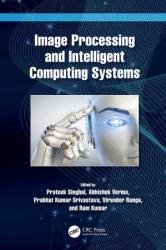 Название: Image Processing and Intelligent Computing Systems
Название: Image Processing and Intelligent Computing SystemsАвтор: Prateek Singhal, Abhishek Verma, Prabhat Kumar Srivastava
Издательство: CRC Press
Год: 2023
Страниц: 321
Язык: английский
Формат: pdf (true)
Размер: 29.6 MB
There is presently a drastic growth in multimedia data. There are many critical applications in which images play a vital role. These applications use raw image data to extract some useful information about the world around us. The quick extraction of valuable information from raw images is one challenge that academicians and professionals face in the present day. This is where image processing comes into action. Image processing’s primary purpose is to get an enhanced image or extract some useful information from raw image data. Therefore, there is a major need for some technique or system that addresses this challenge. Intelligent Systems have emerged as a solution to address quick image information extraction. In simple words, an Intelligent System can be defined as a mathematical model that adapts itself to deal with a problem’s dynamicity. These systems learn how to act so an image can reach an objective. An Intelligent System helps accomplish various image-processing functions like enhancement, segmentation, reconstruction, object detection, and morphing. The advent of Intelligent Systems in the image-processing field has leveraged many critical applications for humankind. These critical applications include factory automation, biomedical imaging analysis, decision econometrics, as well as related challenges.
Depending upon the output of digital images, the field of digital image processing is broadly divided into three types: low-level, mid-level and high-level image processing. Low-level refers to pre-processing image operations, including noise reduction, scaling, and so on. Mid-level refers to basic image processing operations related to edges, segmentation, and so on. Finally, high-level refers to complex image processing operations related to the analysis, recognition and interpretation of image contents for some decision-making. In all these image-processing types, the following three basic steps are performed: (1) Input: a digital image is imported on any image-processing software, such as Matlab, Scilab, Python, and so on. (2) Processing: depending upon the required output, a particular image-processing domain and method/algorithm is used. (3) Output: this produces the output (images or image components) that can also be used as input to the next image-processing tasks. For instance, noise reduction is considered to be the basic step of various image-processing tasks such as segmentation, recognition, and so on. Currently, image processing, Computer Vision (CV), computer graphics and Artificial Intelligence are considered to be overlapping fields. Yet there are no defined boundaries to identify either the beginning and/or the end of a particular field.
Скачать Image Processing and Intelligent Computing Systems